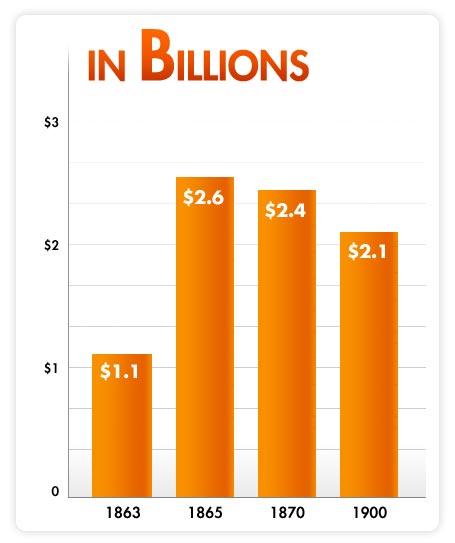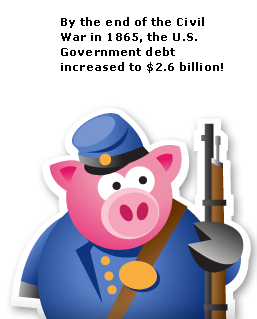
The Civil War (1861-1865)
In 1860, the year before the American Civil War started, the U.S. Government debt was $64.8 million. Once the war began, debt grew quickly. The financial cost of the war was significant, totaling an estimated $5.2 billion.
The Government had to come up with new ways to pay for this expensive war. Two ways the Government accomplished this were:
Legal Tender Act (1862) allowed the Government to:
- print paper money known as greenbacks
- sell $500 million in bonds to raise money
Before the Legal Tender Act, each bank could print its own form of paper money; paper money had value because it was backed by gold. This means that there is an amount of gold held by the Government that’s equal to the value of the paper money. The money printed by the Government after the Legal Tender Act was not backed by gold because the Government did not have that much gold at the time. The “greenbacks” could, however, be used to pay taxes and buy items from stores.
The National Bank Act (1863) allowed for the creation of:
- a nationwide banking system that loaned money to the Government to pay for the war
- a national system of paper money and coins
By the end of the war in 1865, Government debt had exploded, reaching $2.6 billion. That was more than 40 times what it was only five years earlier at $65 million.

- 1860 - The U.S. Government debt was $64.8 million.
- 1862 - The Legal Tender Act allowed the government to print paper money.
- 1863 - The National Bank Act created a system of national banks.









